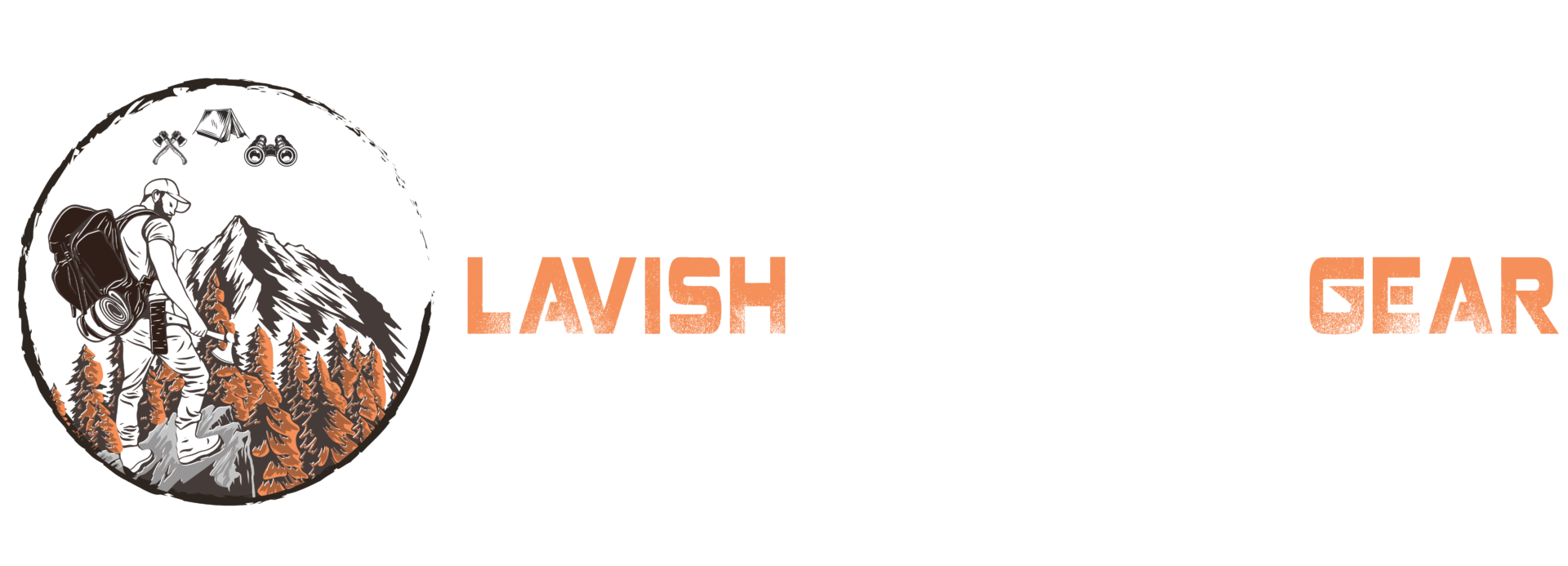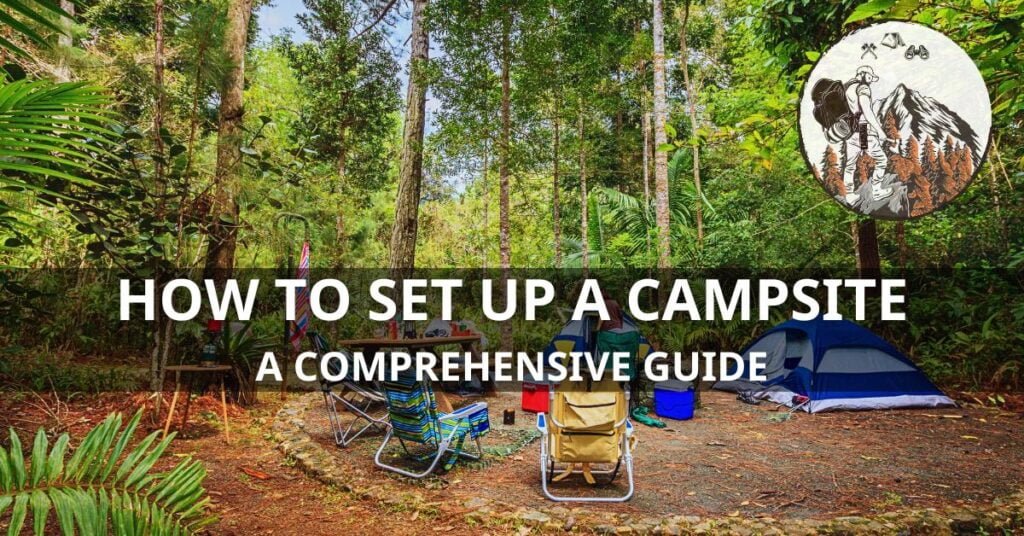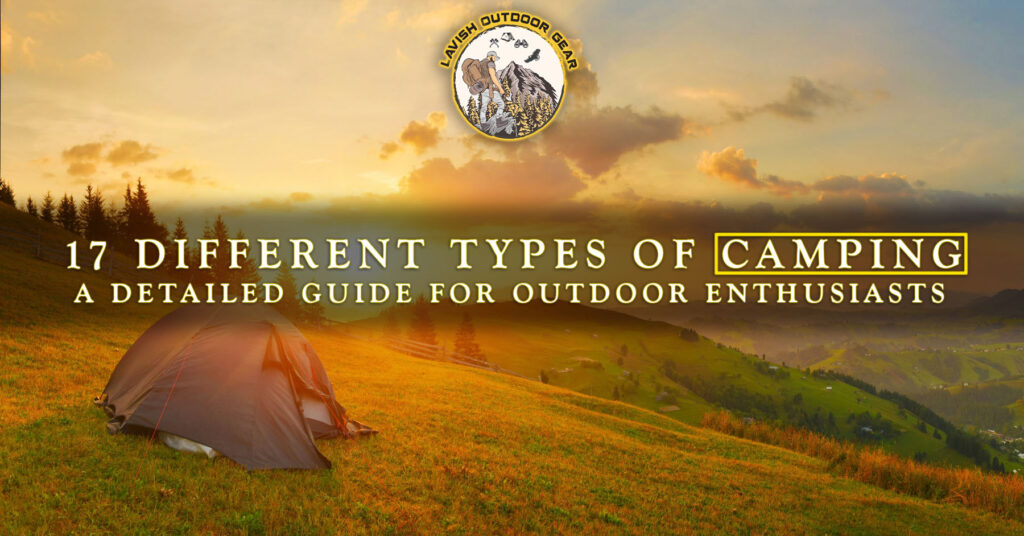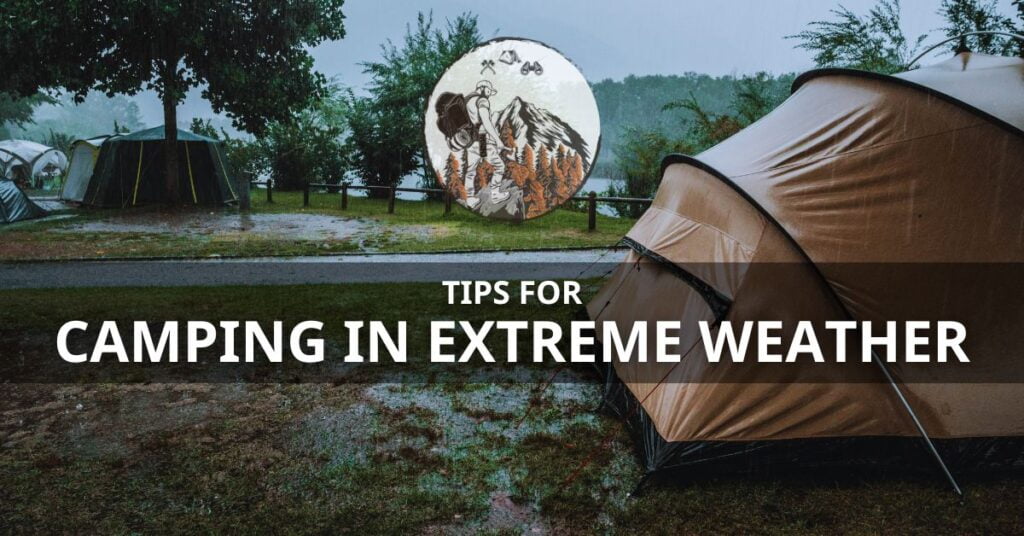For many, camping serves as a cherished escape from the chaos of everyday life. Venturing into the wild, setting up your temporary abode, and embracing the serenity of nature can be a soul-nourishing experience. However, to fully immerse in the calm of the great outdoors, it’s crucial to know how to set up a campsite strategically and with care.
This comprehensive guide is tailored for camping enthusiasts and novice outdoor adventurers alike. We will walk you through each step, from choosing the perfect site to packing the essential gear, all the way to staying safe and respecting the environment. Let’s dive into what it takes to create a safe, comfortable, and unforgettable camping experience.
Let’s find out How to Set Up a Campsite
Table of Contents

Choosing the Right Location
The first and most crucial step in the camping setup is selecting a suitable location for your site. Your chosen spot will become your home away from home during the trip, so it’s essential to consider several factors.
Factors to Consider
Terrain: Look for flat, even ground to pitch your tent. Avoid setting up on any slopes to prevent rolling out of bed or rainwater flooding your tent. Also, be wary of rocky areas that can damage your equipment or pose safety hazards.
Proximity to Water and Facilities: Camp near a clean water source for convenience but maintain the right distance to avoid contaminating it. Choose a site within a reasonable walking distance of restrooms and waste disposal for comfort.
Regulations: Check local regulations for any camping site restrictions. Some areas may have designated camping spots, while others might require permits or restrict camping during certain times of the year.
Finding the Perfect Spot
Once you’ve assessed these factors, it’s time to scout potential sites. Look for areas that are not prone to flash floods, with good natural visibility and airflow. Allow enough distance from trails to not disturb others, and appreciate the value of a view without compromising privacy and comfort.
To help preserve the environment and abide by the “Leave No Trace” principles, camp on hardened surfaces whenever possible, such as on a designated campsite or an already used patch of ground.

Gathering Essential Equipment
Preparation is the key to a successful camping trip. Your shelter and the equipment within it can mean the difference between a cozy night and a miserable experience.
Selecting the Right Tent
The tent will be your primary shelter, so consider the appropriate size for the number of campers. Decide between different types of tents, such as dome, cabin, or geodesic, each with its advantages in terms of space, weight, and weather resistance.
Sleeping Gear
Invest in quality sleeping gear to ensure a night of restful sleep. A combination of a sleeping bag and a pad can offer comfort and insulation from the ground. Look into materials and insulation types based on the expected weather conditions.
Camp Kitchen Essentials
Good food is an integral part of any camping trip. Stock your camp kitchen with a stove, fuel, utensils, pots, and pans. Don’t forget to pack a cooler, proper storage, and cleaning tools to maintain hygiene and prevent attracting unwanted wildlife.
Lighting and Safety Equipment
When the sun sets, proper lighting is crucial. Prepare with headlamps, flashlights, or lanterns with enough batteries or fuel. Safety should be a priority, so always carry a first-aid kit and be knowledgeable about its contents and use.
Setting Up Camp
With all essential gear in place, it’s time to establish your campsite. This involves more than just pitching a tent; it’s about creating a functional and organized living space.
Clearing and Leveling the Area
Clear the site of any debris that could puncture your tent or be a potential hazard. Level the ground as much as possible for comfortable sleeping and to prevent rainwater from pooling around the tent.
Fire and Cooking
To cook your meals and stay warm, set up a fire pit at a safe distance from the tent. Collect wood in an environmentally friendly manner and only use provided fire rings when available. Maintain a safe cooking area by keeping flammable items away from fires and cooking appliances.
Organizing the Layout
Organize your gear by grouping similar items and keeping them tidy. Place sleeping and cooking areas away from high-traffic areas and maintain clear paths within the campsite.
Tent Setup
Follow the manufacturer’s instructions to pitch your tent and ensure it’s secure. Use a ground tarp under the tent to protect the floor and maintain cleanliness. Stake down all points of the tent to provide stability in varying weather conditions.
Water and Sanitation
An adequate supply of water and proper sanitation are essential for a comfortable and safe camping trip.
Finding Water Sources
Identify nearby water sources such as rivers, lakes, or potable taps. Only take water from these sources if you have a filtration or purification system. Boiling, chemical treatments, or water filters can ensure your water is safe to drink.
Waste Disposal
Always dispose of waste properly by using designated rubbish bins or packing out your trash. Dig a small hole at least 200 feet away from water sources and campsites for toileting, then bury or pack out human waste. Carry biodegradable soap for washing dishes and bodies, and disperse grey water widely to minimize environmental impact.

Campfire Safety
A campfire can be the heart of your camping experience, but it’s also a serious responsibility.
Regulations and Restrictions
Always check local regulations regarding campfires. Some areas may have fire bans, specific firewood restrictions, or require permits.
Building and Maintaining a Fire
Construct a fire pit if there isn’t one available. Gather firewood from the ground—never cut live trees or remove branches. Stack wood safely and consider using fire starters to ignite it. Never leave a campfire unattended and be strategic about fire size, especially in high-risk areas or dry conditions.
Extinguishing the Fire
When it’s time to leave, always fully extinguish your campfire. Douse it with water, stir the embers, and check for heat using the back of your hand near the ground. Repeat this process until the ashes are cool to the touch.
Staying Safe in the Outdoors
The wilderness can be unpredictable, and safety should always be at the forefront of your camping adventures.
Wildlife Encounters
Respect wildlife and their habitats. Store food and scented items properly to prevent attracting animals to your camp. Research the local fauna, and understand how to act in case of an encounter. This typically means calmly backing away and giving the animal plenty of space.
Understanding Weather Conditions
Check the weather forecast before your trip, but be prepared for unexpected changes. Pack appropriate clothing layers and gear, including rain protection. Monitor the skies, wind, and temperature shifts while camping to anticipate alterations in the weather.
Emergency Preparedness
In emergencies, always carry a well-stocked first-aid kit and know how to use it. Communicate your trip details with someone not coming along, and carry communication tools such as a satellite phone or a personal locator beacon in areas without cell coverage.
Be prepared to stay put in case of severe weather or injury, and have enough supplies to last an extra day or two.
Conclusion: Embracing the Camping Experience
Camping offers an exceptional opportunity to reconnect with nature and recharge your spirit. By following these guidelines, you’ll set up a campsite that provides comfort, safety, and a sense of belonging in the outdoors. Remember to leave your campsite better than you found it, so others can enjoy the beauty of the wilderness as much as you did.
Whether you’re embarking on a solo journey of self-discovery or enjoying quality time with loved ones, the memories formed under the stars will surely last a lifetime.
Happy camping!
Faqs
Q. What is the most critical factor to consider when choosing a camping site?
The most critical factor is the terrain. Look for flat, even ground to pitch your tent, avoiding slopes to prevent discomfort and potential safety hazards.
Q. How can I ensure a comfortable and restful sleep during camping?
Invest in quality sleeping gear, including a suitable sleeping bag and pad, based on expected weather conditions for comfort and insulation from the ground.
Q. What are the essential items to include in a camp kitchen for a successful camping trip?
Stock your camp kitchen with a stove, fuel, utensils, pots, pans, a cooler, proper storage, and cleaning tools to maintain hygiene and prevent attracting unwanted wildlife.
Q. What is the recommended method for water disposal during a camping trip?
Dispose of waste properly by using designated rubbish bins or packing out your trash. For toileting, dig a small hole at least 200 feet away from water sources and campsites, then bury or pack out human waste.
Q. How should I approach campfire safety to ensure a responsible camping experience?
Always check local regulations on campfires, construct a fire pit if necessary, gather firewood responsibly, and fully extinguish the fire with water before leaving, ensuring ashes are cool to the touch.
Q. What should be considered when selecting the right type of tent for camping?
Consider factors such as the size needed for the number of campers, the type of tent (dome, cabin, geodesic), and advantages in terms of space, weight, and weather resistance when selecting the right tent.
Q. What steps should be taken for proper fire and cooking setup at a campsite?
Set up a fire pit at a safe distance from the tent, collect wood responsibly, use provided fire rings when available, and maintain a safe cooking area by keeping flammable items away from fires and cooking appliances.
Q. How can I stay safe during camping, especially in unpredictable wilderness conditions?
Stay safe by respecting wildlife and their habitats, checking weather forecasts, packing appropriate clothing and gear, and being prepared for unexpected changes. Carry a well-stocked first-aid kit and communication tools for emergencies.



